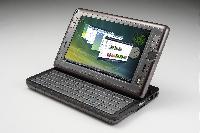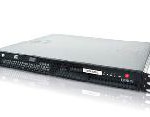Innovation, Processing Performance and Cooperation Key to Moving Forward Faster
Describing the latest trends in mobile computing at the Intel Developer Forum today, Intel Corporation executives said that personalization and content are key drivers behind increased demand for notebook PCs and mobile Internet devices (MIDs).
„The Internet is one of the driving forces in today’s PC market and there is a desire for the Internet to be mobile,“ said David (Dadi) Perlmutter, Intel senior vice president and general manager, Mobility Group. „Intel is serving the market today with notebook PCs, and will expand its reach by adding WiMax to notebooks as well as small form factor MIDs in 2008.“
Perlmutter continued by discussing the importance of high-performance processors to enable users to have mobile access to the internet. Intel continues to provide high-performance processors based on innovative silicon technology that delivers energy efficiency and great battery life needed by users on-the-go including the next generation Centrino processor technology „Santa Rosa.“
Due in May, Santa Rosa processor technology is comprised of a next-generation Intel® Core™2 Duo processor, the Mobile Intel® 965 Express chipset family, Intel® Next-Gen Wireless-N Network Connection, Intel® 82566MM and 82566MC Gigabit Network Connection, and optional Intel® Turbo memory. Perlmutter demonstrated how Intel Turbo Memory decreases resume time from notebook hibernation, thus increasing productivity and reducing system power consumption.
In the first half of 2008, Santa Rosa will be refreshed with Intel’s innovative 45nm Hi-k dual core mobile processor, codenamed „Penryn.“ Later in 2008, Perlmutter said Intel will deliver „Montevina“ processor technology, also with Penryn, for greater performance and energy efficiency. With approximately 40 percent smaller components, Montevina will be ideal for mini- and sub-notebooks, and will include integrated hardware decode for high-definition video.
For the first time, Intel will make its integrated Wi-Fi/WiMAX solution available as an option with Montevina-based notebooks, enabling people to connect to Wi-Fi and WiMAX networks worldwide. Mobile WiMAX provides multi-megabit speed, greater throughput and wider range versus other wireless broadband technologies, which is crucial as consumers increasingly want to access user-generated content, high-definition videos, music, photos and other large data files while on the go.
Redefining Mobility with Innovation, Integration
Anand Chandrasekher, Intel senior vice president and general manager of the Ultra Mobility Group, described the evolution of the personal mobile Internet, outlined changes in Intel’s silicon roadmap that will create radical reductions in power requirements and innovative new packaging technology, and disclosed a range of leading industry players Intel is working with to establish the MID and ultra-mobile PC (UMPC) categories.
Chandrasekher introduced the Intel® Ultra Mobile platform 2007 (formerly codenamed „McCaslin“) for MIDs and UMPCs and said systems will be available over the summer from Aigo*, Asus*, Fujitsu*, Haier*, HTC* and Samsung*. The Intel Ultra Mobile platform 2007 is based on the Intel processor A100 and A110, the Intel 945GU Express Chipset and the Intel ICH7U I/O Controller Hub.
„Today’s environment is primed for a truly personal, mobile Internet experience and the Intel Ultra Mobile platform 2007 combines the flexibility of a PC with the mobility of a handheld device,“ said Chandrasekher. „But we will not stop here. In 2008, Intel will deliver an entirely new platform based on Intel’s 45nm low-power microarchitecture designed from the ground up to let people to carry their personal mobile Internet in their pocket.“
Pulling in the schedule by half a year, Chandrasekher said Intel will deliver its next-generation platform for MIDs and UMPCs – codenamed „Menlow“ – in the first half of 2008. While demonstrating the world’s first working Menlow-based prototype, he said it will be based on a new 45nm Hi-k low power microarchitecture-based processor, codenamed „Silverthorne,“ and next-generation chipset, codenamed „Poulsbo.“
Chandrasekher also announced the formation of the Mobile Internet Device Innovation Alliance. Together, alliance members will work on engineering challenges, including power management, wireless communications, and software integration, that are associated with delivering the full Internet in ever-smaller MID form factors.
45nm High-k Metal Gate Transistors Technology Leadership
Intel’s next-generation processors for the ultra-mobile, mobile, desktop, workstation and server segments will be based on the company’s leading 45nm silicon process technology that uses its revolutionary high-k metal gate transistors.
During his Technology Insight presentation, Intel Senior Fellow Mark Bohr said the company now has working versions of its Silverthorne processor based on its 45nm Hi-k low power microarchitecture for MIDs and UMPCs. Silverthorne joins already working versions of its 45nm Hi-k Intel Core 2 Duo, Core 2 Quad and Intel Xeon family of processors. Today, Intel has more than 15 different 45nm Hi-k product designs in various stages of development, and will have two 45nm manufacturing fabs in production by the end of the year, with four in production by the second half of 2008.
Intel’s long-standing research and technology pipeline has led to innovative advances in silicon technology that in turn allow the company to continuously deliver the cost and performance benefits of Moore’s Law. In 2003, Intel was the first to introduce strained silicon technology to greatly increase the speed of its transistors on its 90nm process.
Intel is already working on technology for 32nm, 22nm and beyond. Bohr described several options that Intel is researching for future technology generations, including tri-gate transistors, Indium Antimonide quantum well transistors and carbon nanotube interconnects.
View Intel Developer Forum Day 2 news disclosures.
View product information for the Intel® Ultra Mobile Platform 2007 at www.intel.com/products/mid/ultramobile2007.htm
View the complete Intel Developer Forum press kit at http://www.intel.com/pressroom/idf.
About Intel
Intel, the world leader in silicon innovation, develops technologies, products and initiatives to continually advance how people work and live. Additional information about Intel is available at www.intel.com/pressroom.




